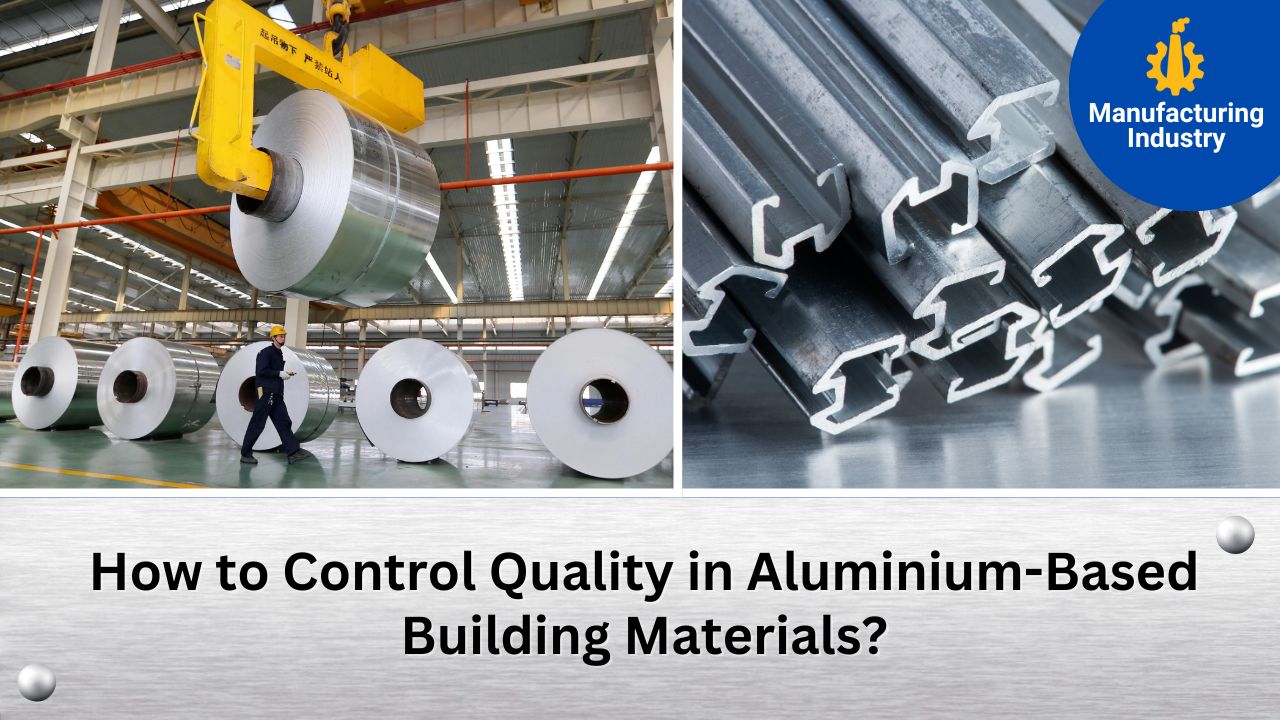
Aluminium is one of the most favored materials for applications and structures in the construction industry owing to its durability, low weight, and corrosion resistance. However, controlling the quality of aluminium-based building materials becomes important to protect safety, longevity, and structural integrity. Quality control for building materials made of aluminium involves several systematized processes, starting from the selection of raw materials to the manufacture of the final product, testing, and adherence to the industry standards. Discussed below are the specific aspects of quality control that govern aluminium building materials.
1. Selection of Raw Materials
The selection of quality raw materials is the basis of quality control in aluminium-based building materials. Aluminium in alloys can be procured in numerous forms; each of these alloys has distinctive properties. Depending on the alloy chosen, a given alloy is to be considered for a particular application considering strength, corrosion resistance, malleability, etc. The raw aluminium should be sourced from credible suppliers conforming to the industry requirements.
2. Advanced Manufacturing Processes
There is a need for precision and best practices to be adopted in the manufacturing of aluminium-based building materials. The processes, in turn, ensure consistency and quality:
- Control of Extrusion Process: The extrusion of aluminium shapes the profile for doors, windows, and structural components. During extrusion, temperature, pressure, and velocity parameters must be monitored to avoid a hazard of defects with respect to uniformity.
- Heat Treatment: Heat treatments improve the mechanical characteristics of aluminum. The processes of annealing and tempering must be done under controlled conditions so that the desired amount of strength and flexibility may be attained.
- Surface Treatment: The coatings create anodizing, powder coating, or painting, which protect aluminium from corrosion while simultaneously improving aesthetics. Regular checks for coating thickness and adhesion will help guarantee the long-term performance of these coatings.
3. Quality Testing and Inspection
Rigorous testing and inspection help to identify any defects in materials while ensuring compliance with industry standards. Among these tests are:
- Chemical Composition Analysis: Tests such as spectrometry and other laboratory tests are done to assess the aluminium alloy composition against the correct proportion of elements.
- Mechanical Testing: A series of tests, which include tensile strength, hardness, and impact resistance testing, confirm the material’s ability to withstand stresses and environmental factors.
- Dimensional Checking: These tests are carried out using precision measuring instruments like calipers and coordinate measuring machines (CMM) to check dimensions of extruded or cast aluminium parts.
- Corrosion Resistance Testing: This test includes assessing the life of aluminium when subjected to saline or humid environments under controlled conditions.
4. Adherence to Quality Standards
The building materials made of aluminum are required to conform to national and international quality standards to make them trustworthy and safe. Some of the standards that are relevant are:
- ISO 9001: This standard guarantees that there are corresponding quality management systems in manufacturing.
- BIS (Bureau of Indian Standards): These are typical of aluminium products as they relate to construction within the jurisdiction of India.
- ASTM Standards (American Society for Testing and Materials): These standards are on the mechanical properties of the material, testing methods, and specifications of the material.
- EN 755 and EN 573 (European Norms): The standards specify the composition of alloys and the extrusion of aluminium.
Frequent audits and reputed certifications for such organizations ensure compliance and cater to the customers about the materials being of the best quality.
5. Setting Up of Quality Management System
A quality management system lays down clear controls of documentation and practice of quality behavior throughout the organization. Such a system will cover:
- SOPs: Standard Operational Procedures include clear guidance on each part of the production process.
- Training of People: Counseling should be done periodically, educating the workers on best practices and quality measures.
- Improvement Strategies: Feedback loops, process auditing, and customer feedback refine the production technique.
- Supply Chain Management: Proximity to raw material suppliers further guarantees quality consistency.
6. Sustainable and Eco-Friendly Practices
Sustainable development is part of quality control. The use of recycled aluminum, waste reduction manufacturing processes, and energy-efficient production techniques maintain high quality with low environmental impact.
7. Final Inspection and Packaging
The final materials should be put through a final inspection before being sent to the end-users to ensure that they comply with specifications, while packaging followed by labeling with batch number and certification details enhances traceability and will prevent damage during transportation and storage.
Staff Writer
Staff Writer at Manufacturing Industry
Conclusion
Managing quality in aluminum-based building materials is an activity that involves the selection of raw materials, accuracy in manufacturing processes, organized testing, and adherence to such industry standards. With a robust quality management system, manufacturers can promise duty-bound, reliable, and sustainable aluminum products to meet the customer and regulatory needs. Investing in quality control elevates strength and durability and also instills a sense of trust and credibility in the construction industry.